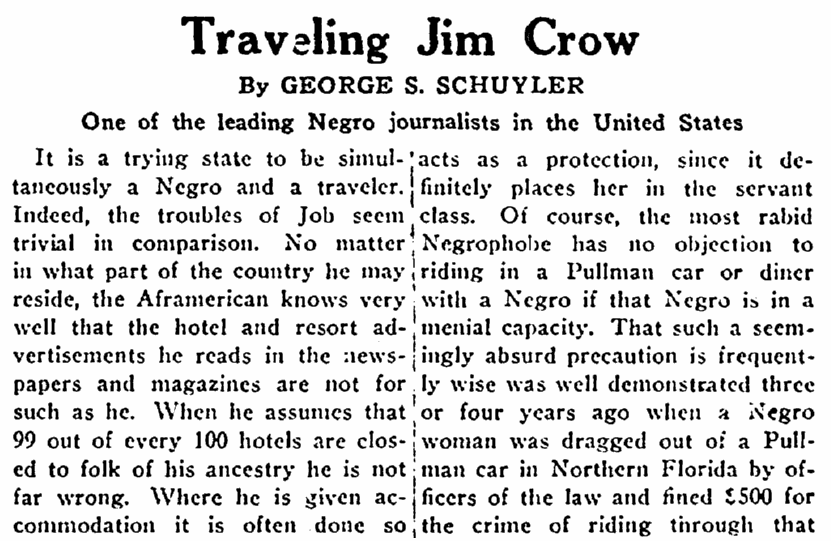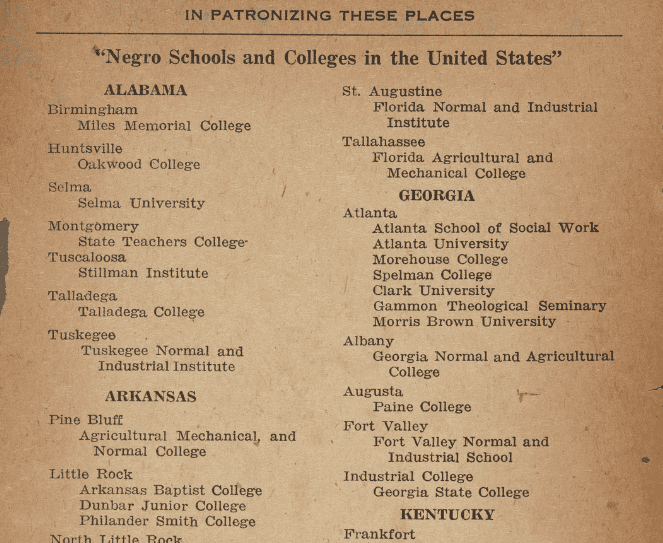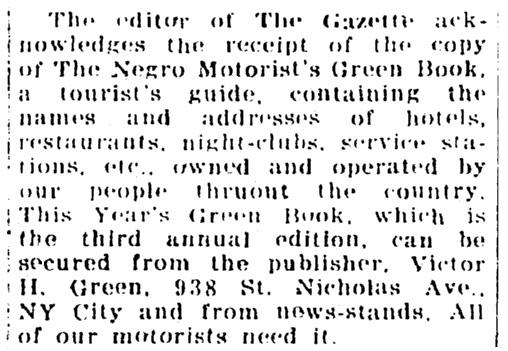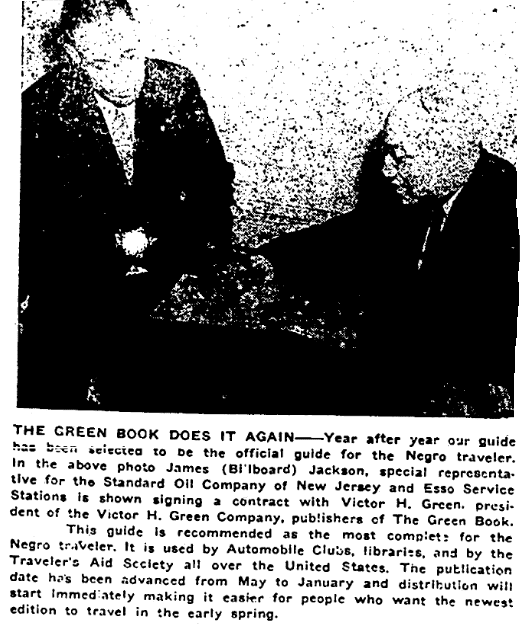Introduction: In this article, Gena Philibert-Ortega goes online – and searches old newspapers – to learn about “The Green Book,” an important guide for African American travelers back in the days of Jim Crow segregation. Gena is a genealogist and author of the book “From the Family Kitchen.”
Most people are familiar with the obstacles African Americans faced while traveling prior to the Civil Rights movement, even celebrities. If Sammy Davis, Jr. or baseball legend Jackie Robinson experienced discrimination entering restaurants and securing lodging or travel accommodations, then you can imagine what issues everyday families faced that would have made travel within the United States, especially in the segregated South, very difficult – travel that white Americans took for granted.
…in the ’50s, every black star that worked Vegas, that helped build it up, who would pack a joint – I’m talking Lena Horne, Nat King Cole, Billy Eckstine, the Mills Brothers – were not allowed to eat there, could not walk through the front door of the casino, gamble, nothing. You could perform, get out of the casino by the side door, and head to the ghetto.
–Sammy Davis, Jr.*

African American journalist George S. Schuyler expressed this frustration in his 1930 article “Traveling Jim Crow”:
No matter in what part of the country he may reside, the Aframerican knows very well that the hotel and resort advertisements he reads in the newspapers and magazines are not for such as he. When he assumes that 99 out of every 100 hotels are closed to folk of his ancestry he is not far wrong.

As Americans became more mobile with the affordability of automobiles, and later with the implementation of the interstate highway system, how could African Americans travel with the same ease that whites took for granted? An entrepreneurial African American postal employee had the answer.
In 1936 Victor Hugo Green (1892-1960) started a travel guide aimed at African Americans who needed to know where safe and friendly places to obtain services were while traveling in New York. It makes sense that as a postal employee he would be familiar with businesses that welcomed African Americans. He later used his postal connections to expand his work – originally titled The Negro Motorist Green Book but referred to simply as The Green Book – to include all of the United States.

Paging through The Green Book, it quickly becomes obvious that it was an invaluable resource for more than just traveling. For example, in the 1947 edition there is information about education, including where “Negro Schools and Colleges” existed in the United States.

The Green Book in the Newspaper
One way The Green Book was advertised was via the newspapers. In articles, advertisements, and mentions by editors, African American families across the nation would have become familiar with this important guide. This early mention of The Green Book from a 1939 newspaper says it is:
…a tourist’s guide, containing the names and addresses of hotels, restaurants, night-clubs, service stations, etc., owned and operated by our people thruout [sic] the country… All of our motorists need it.

This 1947 newspaper article features Victor Green and James Jackson of Standard Oil signing a contract. Standard Oil was an important partner for Green and his guide. Standard Oil owned Esso, now known as Exxon, who not only hired African Americans but encouraged them to become franchisee gas station owners. Esso bought advertising in The Green Book and sold the guide at its stations.**
Green’s guide understandably became popular and successful, allowing him to open a travel business. What started as a small regional guide grew in popularity and was “… used by Automobile Clubs, libraries, and by the Traveler’s Aid society all over the United States.”

The death of Victor Hugo Green in 1960 did not mean the end of The Green Book. His wife Alma continued compiling and publishing it until it was no longer necessary in the years following the passage of the Civil Rights Act in 1964, which outlawed racial segregation.
Where to Find Copies of The Green Book Today
The New York Public Library’s Schomburg Center for Research in Black Culture recently digitized their collection of The Green Book. This digitization project makes available 21 of the guides. At this website you can read, page by page, each digitized copy of The Green Book.
A description of the guide, quoted from the 1949 edition, provides a history and the thoughts of Victor H. Green:
With the introduction of this travel guide in 1936, it has been our idea to give the Negro traveler information that will keep him from running into difficulties, embarrassments and to make his trips more enjoyable. The Jewish press has long published information about places that are restricted and there are numerous publications that give the gentile whites all kinds of information. But during these long years of discrimination before 1936 other guides have been published for the Negro, some are still published, but the majority have gone out of business for various reasons. In 1936 the Green Book was only a local publication for Metropolitan New York; the response for copies was so great it was turned into a national issue in 1937 to cover the United States… At the present time the guide contains 80 pages and lists numerous business places, including whites which cater to the Negro trade… There will be a day sometime in the near future when this guide will not have to be published. That is when we as a race will have equal opportunities and privileges in the United States. It will be a great day for us to suspend this publication for then we can go wherever we please, and without embarrassment. But until that time comes we shall continue to publish this information for your convenience each year.
In addition to the New York Public Library’s digitization project, an interactive map that includes all of the addresses found in the 1956 Green Book can be found on the University of South Carolina Digital Libraries page.
The Green Book grew and prospered out of necessity. But as Victor Hugo Green had hoped, there eventually was a day “in the near future when this guide will not have to be published.”
Related Articles:
- ‘Freedom’s Journal’: The 1st African American Newspaper Published in America
- African American Heroes: Tuskegee Airmen
- 4 African American Women Heroes
—————————-
* “Sammy Davis Jr.: A Personal Journey with My Father” by Tracey Davis, Nina Bunche Pierce. Available on Google Books. https://books.google.com/books?id=8MZnAgAAQBAJ&lpg=PP1&dq=sammy%20davis%20jr&pg=PT43#v=onepage&q=discrimination&f=false
** “The Green Book: The Forgotten Story of One Carrier’s Legacy Helping Others Navigate Jim Crow’s Highways.” https://www.nalc.org/news/the-postal-record/2013/september-2013/document/09-2013_green-book.pdf
